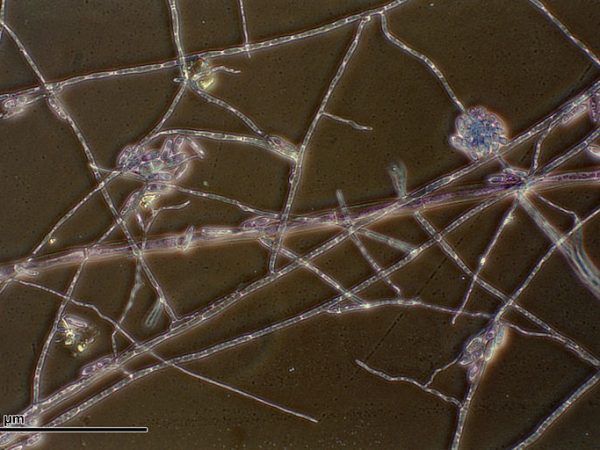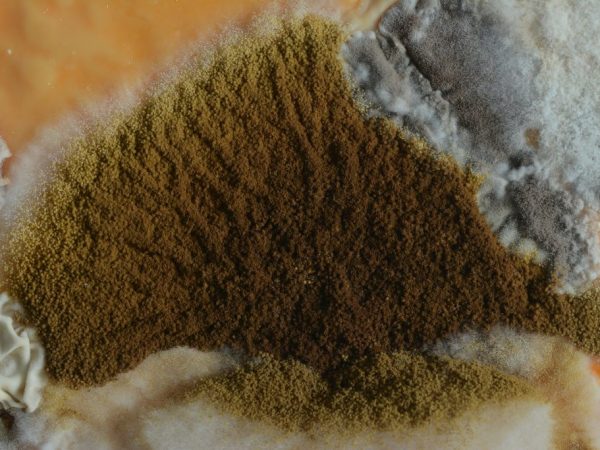Imperfect mushrooms and their representatives
Of all the variety of mushrooms known to science, the class Imperfect mushrooms or Deuteromycetes stands alone in the kingdom of Mushrooms. This is a class of higher organisms, the reproduction of which is carried out only with the help of asexual sporulation. Some mycological scientists consider them to be a formal class of mushrooms.

Deuteromycetes
Description and general characteristics
Deuteromycetes are also known as Mitosporous or Anomorphic. This biological class, belonging to the department of molds, has more than 25 thousand species. It includes representatives, the main feature of which is the inability to form bags or basidia during reproduction, in contrast to the perfect ones. They reproduce using propagules, which are conidia.
Less commonly, these fungi are formed from undifferentiated mycelium. Many of them are phytopathogenic (provoke plant diseases). Moreover, some have examples of sexual sporulation, but the leading stage is the conidial stage, and the marsupial becomes a priority in development. Some of this class are at an intermediate stage in the development of Ascomycetes and Basidiomycetes.
The vegetative body of mitospores is a branched mycelium of the haploid type, which has septa - septa, with simple pores. It consists of multinucleated cells that form hyphae (mushroom filaments). The process of reproduction itself occurs in isolated group conidiophores or on pycnidia - specific formations of fruit bodies.
The classification of conidiophores implies two different forms: single and group.
Solitary - close to each other, but do not grow together and are called "sporoloid". And the group ones have fused side walls, they are called "coremias".
Irina Selyutina (Biologist):
In many deuteromycetes, conidiophores form a layer on the surface of the convex plexus of hyphae or stroma in the form of a pad. This type of conidial sporulation is called "sporodochia". If conidial sporulation of this type has a mucous or jelly-like consistency, and at the base there is a looser plexus of mycelium hyphae, they are called "pionottes". Conidia formed in pionots are submerged in mucus.
"Lodge" (acervules) by the nature of the union of conidiophores resemble sporodochia, but conidiophores form in them a tight layer not on the convex stroma, but on a more or less flat plexus of hyphae. Lodges are often found in plant parasitic deuteromycetes.
The most complex conidial structures are "pycnidia". They have a spherical jug-like shape, dressed with a dense light or dark shell with a narrow opening (porch) at the top.
Pycnidia are considered the best breeding method - biological containers inside which conidia form. At the top, they have small holes through which the spores get out.
Deuteromycete groups and their distribution
Imperfect fungi are classified according to the type of conidial sporulation:
- Hypomycetes, or hyphomycetes: the most massive order related to this department. It includes many groups, genera and species that are dissimilar in shape, structure and color of conidiophores and conidia. The main common characteristic of this order is that conidiophores have a mycelial type of development and on the substrate are determined singly or with the presence of coreia and sporodochia. For this reason, their sporulation looks like a powdery plaque. This order includes many representatives of phytopathogenic species that harm agricultural plantings. Diseases caused by them lead to mold, rot, wilting and death. Thus, a fungus of the Fusarium genus causes dry rot on potato tubers, gray rot on vegetable and fruit and berry plants, spotted beet tops, barley shoots, cotton boll mold, citrus fruits, seeds and bulbs of agricultural plants. The division of the order into families is based on the nature of aggregation of conidiophores, as well as their color and conidia.
- Melanconial: a homogeneous group, including a small number of representatives that belong to the class Imperfect mushrooms. Their conidia are formed in special beds of shortened conidiophores. They appear on the surface of the affected nutrient medium in the form of pads, flat or protruding. They provoke ulcers on the surface of seeds, cracks in the stem and spots on the leaves. Due to the presence of mucus, the spread of conidia with the help of water, animals and insects, especially those that use this mucus for food.
- Spheropsy, or pycnidial: differ in that their conidia, formed in pycnidia, can sink into the substrate. For many representatives of this order, spore places (pycnidia) in the form of small, barely visible to the naked eye balls - hence the name of the order. They cause many diseases of agricultural crops, manifested by rot, spotting, necrotic lesions of parts of the stem and cytosporosis. A common symptom is the appearance of pycnidia on the affected areas in the form of bulges and black dots.
Irina Selyutina (Biologist):
The order Sterile mycelium is also referred to as imperfect mushrooms. It includes mushrooms that do not form any sporulation, or they are very rare in these representatives of the kingdom of Mushrooms. This order includes:
- genus Sclerotium: causes rot of plant tissues of agricultural and other plants; the disease is often referred to as "coal rot";
- genus Rhizoctonia, its representatives are capable of infecting many cultivated and wild plants.
Representatives of these genera form sclerotia.
Some mushrooms are also known that only have mycelium. These include the fungus that settles in the seeds of the intoxicating chaff.
Mycophilic and entomopathogenic imperfect fungi also belong to the Deuteromycete class.
Significance in human life

Molds are used to make antibiotics
Imperfect fungi are found in soil, plant debris, or in substrates of animal origin. Although most of their representatives are common saprophytes, they are capable of causing disease and parasitizing animals and even humans, causing a lot of trouble.
Pycnidial fungi often parasitize lichens, algae and cause diseases of cultivated plants. But another important feature is the ability to damage industrial inorganic materials: paints and varnishes, plaster, concrete, and settle in freshwater and marine reservoirs. There are pathogenic and toxic species that provoke skin diseases (for example, ringworm), and can also lead to severe intoxication of the body, developing on food.
However, imperfect mushrooms also have beneficial properties. So, aspergillus play an important role in the production of organic acids: citric, oxalic and others.
Entomopathogenic imperfect fungi are of great importance in limiting the number of citrus pests.
They are used for the production of enzymes for the food and textile industries, as well as for the control of insect pests (biological method). They play an important role in the soil formation process and the processing of organic residues. Also used for the manufacture of antibiotics.
Conclusion
Imperfect mushrooms, in most cases, worsen the quality of products, but a person has learned to use some of them for his own good. Research in this area does not stop and allows you to discover new areas of application and learn new things about these mushrooms.



